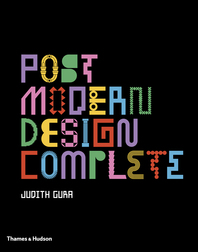Houses by three Modernist masters ' Breuer, Neutra, and Schindler ' present different challenges to new architects.
Schindler in the suburbs
The story surrounding a 1940 spec house in Inglewood by Rudolph Schindler is less tortuous than that of the Sten-Frenke. To begin with, the circumstances of its construction are basically unknown. The architect built three houses on a typical block in a middle-class section of the town, each with a different layout, reacting to the changing slope of the land. All are modestly sized at about 1,000 square feet, which includes two bedrooms, a kitchen, and a large common space for living and dining. Each house embraces Southern California’s light and climate, opening to its surroundings while maintaining privacy.
Click on the slide show icon to see more images.
The designs attempt to make a suburban tract house into a work of spatial art, built from a wooden frame, stucco, and plaster. There are echoes of Wright and of Loos’s Raumplan, where each space has several sectional changes, a puzzle of interlocking parts: A partition turns into a bookshelf and then turns down into stairs that are attached to a desk. Schindler’s sectional games shift from room to room; a very low ceiling at the entrance becomes much higher as you step down into the living room. In the other direction, that low ceiling is raised in the bedrooms to create clerestory windows for light while maintaining privacy. “Schindler was really a kind of magician,” says Steven Ehrlich, the architect for the just-completed renovation of one of the houses. “In this house, he was able to do it with very few ingredients.”
Ehrlich was visiting friends in 2009, and after noticing their home’s Schindleresque sectional variation, asked if it was, in fact, by Schindler. His intuition was right, and the house next door — the middle of this set of three — was up for sale by probate. In complete shambles, it had suffered years of neglect and was seen as an eyesore on the block. Acting quickly, Ehrlich bought the house. He plans to sell the renovated structure to his daughter and son-in-law on “favorable terms.”
“We didn’t want to change the house; we wanted to keep the flow of it,” says son-in-law Joel Bell, an industrial designer who acted as project manager on the renovation. “But we live in 2010,” adds daughter Ohna Ehrlich, a handbag designer. “We have a baby, and we needed it to be updated to today’s standards.”
Ehrlich’s approach saved what could be saved of the original. While Schindler’s art was bold, his details were often shoddy. The flat roof had suffered massive water damage and needed to be entirely reconstructed. Schindler’s ideal silhouette is now realized, enabled by insulation and waterproofing hidden beneath its smooth stucco skin.
Many interior elements, including much of the built-in furniture and storage space, were salvaged and restored. In other areas, Ehrlich interpreted Schindler’s precedents. The kitchen and bathroom are both entirely new, but they attempt to continue Schindler’s approach with a handle detail that reflects the existing built-in desks. A new floor and new baseboard also reconstruct the original Schindler details.
In all, the renovations bring the 70-year-old structure up to contemporary standards, and do so in a straightforward, unpretentious manner; the house is meant to be lived in, not simply looked at. Schindler’s original vision, while brilliant spatially, was perhaps overly ambitious from the start. Ehrlich’s interventions compensate for the inadequate construction of the idealistic Schindler, who could privilege the art of space over the resolution of its constituent parts.
All three of these projects, then, have a family resemblance. Each by a European émigré, ambassadors of Continental Modernism, they all carry the weight of that legacy. They also reflect the improvisatory nature of their adopted home, America, building the image of Modernism with the most expedient construction available. Neutra achieved this better than Schindler or Breuer, but with each, to save the house is to save its idea, even when that idea was perhaps unreasonable.
The three also present different approaches to the problem of renovation. Mori was given more freedom and more money than the other two, and the result is a hybrid: a combination of Breuer’s initial structure and Mori’s own formidable approach. For the ongoing changes to Neutra’s Sten-Frenke House, the restorations oscillate in time, trying to approximate a place between Neutra’s powerful design and the desires of a contemporary client. Lastly, Schindler’s modest house has been continued with an equally modest renovation, one that provides a hopeful argument for significant architecture in a conventional setting. For all the projects, their continual negotiations of the past and present indicate that there is no final, definitive reading: Architecture must be constructed over and over and over again, if it is to persist.



Post a comment to this article
Report Abusive Comment